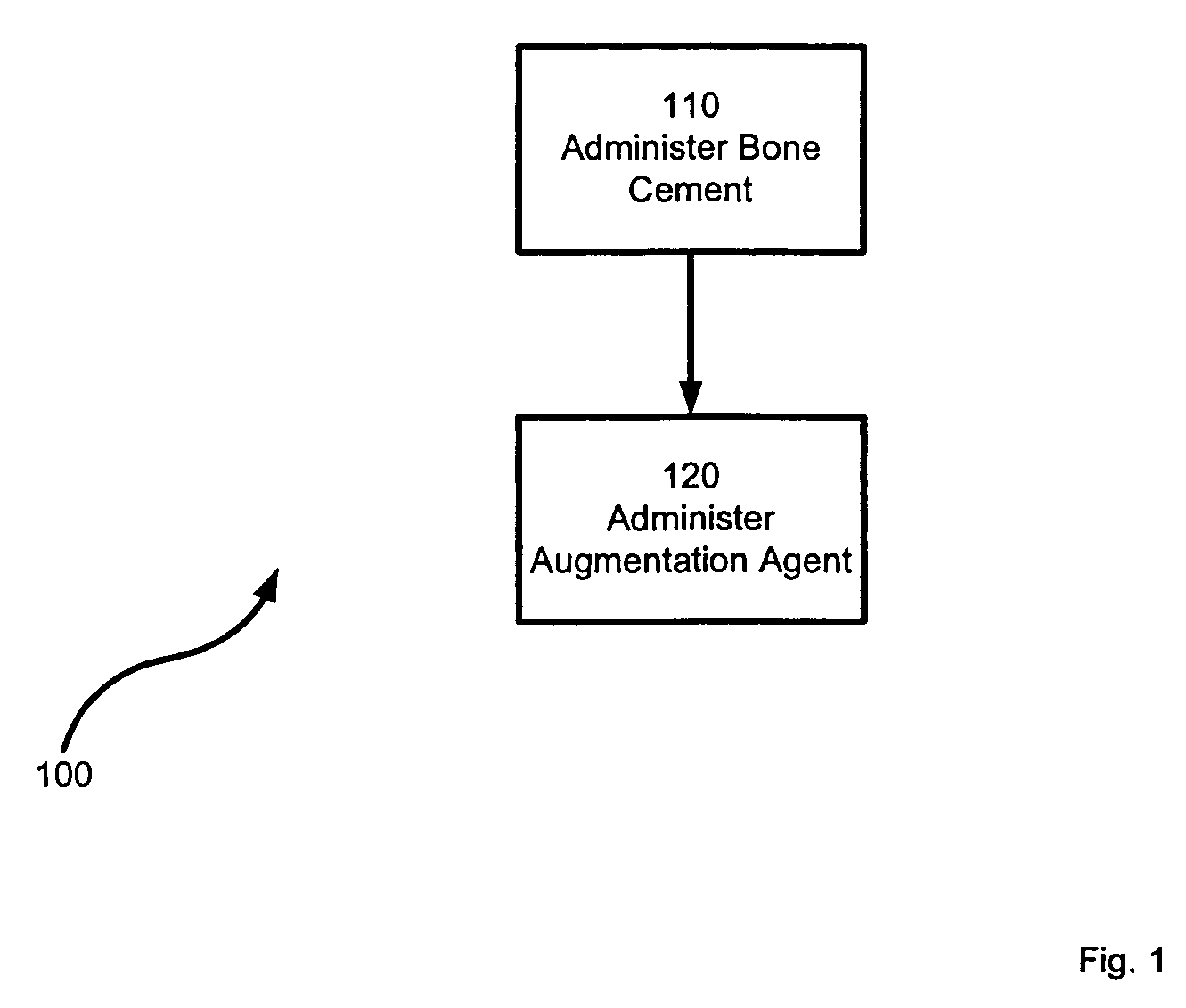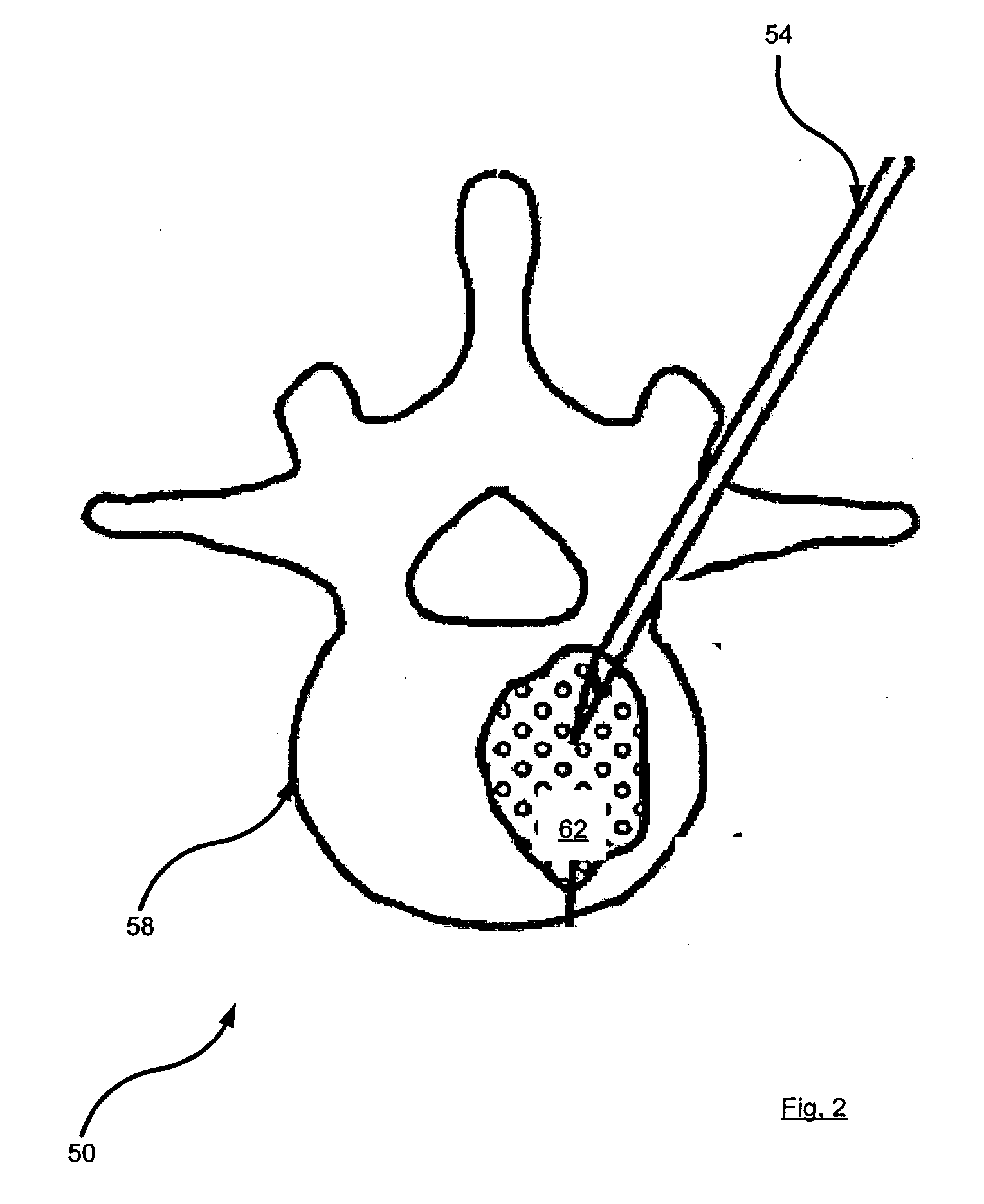Method for bone augmentation
a bone augmentation and bone technology, applied in the field of bone condition, can solve the problems of net loss of bone density, increased susceptibility to fracture, thin and more fragile bones, etc., and achieve the effect of increasing global bone density
- Summary
- Abstract
- Description
- Claims
- Application Information
AI Technical Summary
Benefits of technology
Problems solved by technology
Method used
Image
Examples
Embodiment Construction
[0043] Referring now to FIG. 1, a flowchart depicting a method of augmenting bone is indicated generally 100. Method 100 can be applied to many different types of bone conditions, including degeneration, fractures, injury and disorders. In a presently preferred embodiment, method 100 is used to treat an osteoporotic fracture.
[0044] Referring to FIG. 2, a vertebra is indicated generally at 50. Vertebra 50 has an osteoporotic fracture and exemplifies one type of bone (a vertebra) and a corresponding condition (fracture) that can be treated using method 100. Thus, to treat vertebra 50 using method 100, first step 110 would be performed. At step 110, a bone cement is administered. In the case of vertebra 50, such an administration of bone cement is performed using vertebroplasty or kyphoplasty. In FIG. 2, vertebra 50 is shown undergoing a vertebroplasty, in order to effect step 110. Thus, FIG. 2 shows a vertebroplasty needle 54 inserted along a transpedicular approach with the tip of n...
PUM
 Login to View More
Login to View More Abstract
Description
Claims
Application Information
 Login to View More
Login to View More - R&D
- Intellectual Property
- Life Sciences
- Materials
- Tech Scout
- Unparalleled Data Quality
- Higher Quality Content
- 60% Fewer Hallucinations
Browse by: Latest US Patents, China's latest patents, Technical Efficacy Thesaurus, Application Domain, Technology Topic, Popular Technical Reports.
© 2025 PatSnap. All rights reserved.Legal|Privacy policy|Modern Slavery Act Transparency Statement|Sitemap|About US| Contact US: help@patsnap.com



